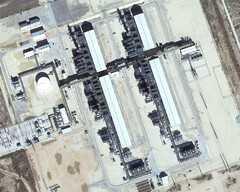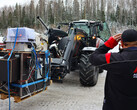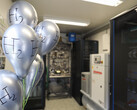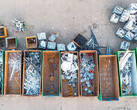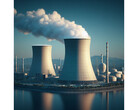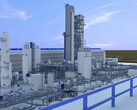Occidental Petroleum is the global leader in developing carbon capture technology. They are constructing the Stratos complex in Texas, a massive multi-billion dollar project that will capture carbon dioxide from the air and store it underground. The funding for this venture is provided by major companies, including Amazon, Shopify, and Airbus, along with vital support from the US President, Joe Biden, who has already invested hundreds of millions of dollars in the project.
Occidental's CEO, Vicki Hollub, has spent $1.1 billion and is seeking government support to build 100 more plants. While low-cost offset agreements are being declined to prevent greenwashing, numerous firms are willing to pay inflated prices for carbon credits to achieve the net-zero emissions objective.
Financing carbon capture through fossil fuel revenues
Occidental built the "Century" facility in 2010 for carbon dioxide capture and storage. Unlike the new facility, CO₂ was sourced from a natural gas processing plant rather than directly from the air. The older plant could also be utilized to boost gas and oil production and promote it as net zero. This approach aimed to finance carbon capture costs with fossil fuel income.
However, the older plant has only utilised up to one-third of its capacity in the past 13 years due to insufficient gas supplies from surrounding fields, resulting in the plant's unprofitability. Consequently, it was discreetly sold for a fraction of its construction expenditure.
Occidental was the second-worst performer in the S&P 500 on Monday. The International Energy Agency views the swift proliferation of carbon capture and storage (CCS) innovation as an imperative measure to reduce CO₂ and conform with the Paris Agreement. However, currently only 4% of the required carbon capture is attained. Nonetheless, the oil industry specifically proposes DAC plants as a ready solution to climate issues.
Prevent emissions from the very beginning
Paul Kindsfather, formerly employed by Century until 2013, clarifies that constructing solar panels or wind turbines is more cost-effective than producing equipment for capturing carbon dioxide from the air. This is due to the fact that each carbon capturing installation is one-of-a-kind, significantly larger, and more difficult to build. Additionally, such systems are not yet resource or cost efficient.
The high cost of the technology makes it very clear that avoiding the emissions in the first place is economically the wisest thing to do.
- Malte Meinshausen, Professor of Climate Science at the University of Melbourne
Quelle(n)
Bloomberg | Bild: Google Earth




